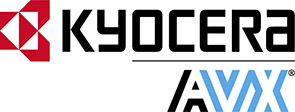SMD MLCC 1206 X7R 50V 0.1uF
- RS Stock No.:
- 144-1708P
- Mfr. Part No.:
- 12065C104JAT2A
- Brand:
- AVX

Bulk discount available
Subtotal 500 units (supplied on a reel)*
£41.00
(exc. VAT)
£49.00
(inc. VAT)
FREE delivery for orders over £50.00
Temporarily out of stock
- 1,400 unit(s) ready to ship
- Plus 4,000 unit(s) shipping from 28 January 2026
Need more? Click ‘Check delivery dates’ to find extra stock and lead times.
Units | Per unit |
|---|---|
| 500 - 900 | £0.082 |
| 1000 - 1900 | £0.08 |
| 2000 - 4900 | £0.078 |
| 5000 + | £0.076 |
*price indicative
- RS Stock No.:
- 144-1708P
- Mfr. Part No.:
- 12065C104JAT2A
- Brand:
- AVX
Specifications
Technical Reference
Legislation and Compliance
Product Details
Find similar products by selecting one or more attributes.
Select all | Attribute | Value |
|---|---|---|
| Brand | AVX | |
| Capacitance | 100nF | |
| Voltage | 50V dc | |
| Package/Case | 1206 (3216M) | |
| Mounting Type | Surface Mount | |
| Dielectric | X7S | |
| Tolerance | ±5% | |
| Length | 3.2mm | |
| Depth | 1.6mm | |
| Minimum Operating Temperature | -55°C | |
| Maximum Operating Temperature | +125°C | |
| Suppression Class | EIA Class 2 | |
| Terminal Type | Surface Mount | |
Select all | ||
|---|---|---|
Brand AVX | ||
Capacitance 100nF | ||
Voltage 50V dc | ||
Package/Case 1206 (3216M) | ||
Mounting Type Surface Mount | ||
Dielectric X7S | ||
Tolerance ±5% | ||
Length 3.2mm | ||
Depth 1.6mm | ||
Minimum Operating Temperature -55°C | ||
Maximum Operating Temperature +125°C | ||
Suppression Class EIA Class 2 | ||
Terminal Type Surface Mount | ||
AVX 1206 MLCC Series
X7R formulations are called “temperature stable” ceramics and fall into EIA Class II materials, and COG (NPO) is the most popular “temperature-compensating” EIA Class I ceramic materials
Multilayer Ceramic Capacitors whose temperature variation is within ±15% from -55°C to +125°C
The capacitance change is non-linear
AVX high voltage chips have advantages of high value, low leakage and small size, thus applications include as snubbers in high frequency power converters, resonators in SMPS and high voltage coupling/DC blocking
These high voltage chip designs exhibit low ESRs at high frequencies
The capacitance change is non-linear
AVX high voltage chips have advantages of high value, low leakage and small size, thus applications include as snubbers in high frequency power converters, resonators in SMPS and high voltage coupling/DC blocking
These high voltage chip designs exhibit low ESRs at high frequencies
Ceramic Capacitors exhibit low parasitics and excellent EMI filtering capabilities. In a multilayer configuration, they display high capacitance values and various voltage ratings over a wide temperature range. Multiple styles are available such as MLCC chips, leaded capacitors, stacked capacitors and capacitors that utilise unique geometries.
X7R formulations are called "temperature stable" ceramics and fall into EIA Class II materials. X7R is the most popular of these intermediate dielectric constant materials. Its temperature variation of capacitance is within ±15% from -55°C to +125°C. This capacitance change is non-linear.
1206 Range
C0G (NP0) is the most popular formulation of the "temperature-compensating", EIA Class I ceramic materials
X7R formulations are called "temperature stable" ceramics and fall into EIA Class II materials
Y5V formulations are for general-purpose use in a limited temperature range.These characteristics make Y5V ideal for decoupling applications
X7R formulations are called "temperature stable" ceramics and fall into EIA Class II materials
Y5V formulations are for general-purpose use in a limited temperature range.These characteristics make Y5V ideal for decoupling applications
Related links
- SMD MLCC 1206 X7R 50V 0.1uF
- SMD MLCC 1206 X7R 500V 4700pF
- AVX 100nF Multilayer Ceramic Capacitor MLCC ±5% , SMD
- MLCC SMD VW80808 0805 0.1uF 50V X7R +-10
- MLCC SMD 1206 25V 10uF X7R 10% T: 1.6mm
- AVX 47nF Multilayer Ceramic Capacitor MLCC 50V dc ±10% X7R Dielectric 0603 (1608M) SMD, Max. Temp. +125°C
- TDK 2.2μF Multilayer Ceramic Capacitor MLCC ±10% , SMD
- TDK 4.7μF Multilayer Ceramic Capacitor MLCC ±10% , SMD
